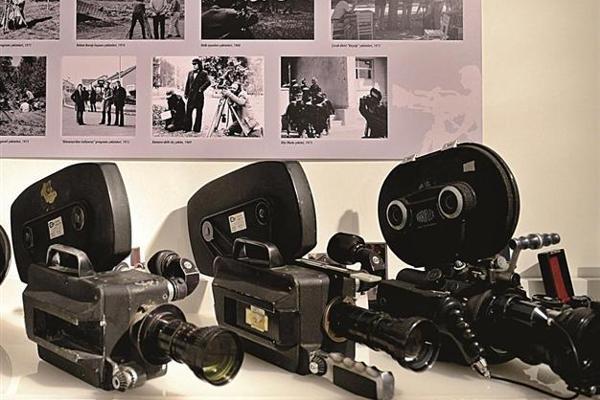TRT mirrors history of Turkey’s broadcasting at a new museum
ANKARA - Anatolia News Agency


The Museum of Broadcasting History is displaying TRT’s long sojourn in broadcasting for the first time. Materials include lots of objects since the past. AA photo
Turkey’s state-owned television TRT is displaying its long sojourn in broadcasting for the first time with a new museum in Ankara.The Museum of Broadcasting History TRT in the country’s capital displays old microphones, current virtual studios, outfits from the past, cars driven by the founder of the Turkish Republic, Mustafa Kemal Atatürk, as well as many materials used in radio programs and television series.
The museum, which was made possible by the labor of more than 200 workers and four years of work, was recently opened with a visit by President Abdullah Gül.
Through documents that have acquired great pertinence throughout Turkey’s history, the museum depicts the transition from radio to television in a step-by-step fashion.
The entrance welcomes visitors with film-mounting machines, the microphone through which Atatürk made his 10th-anniverary speech (10. Yıl Nutku), hand-made voice recording machines, as well as posters. In the same area, which takes visitors on a journey through history, visitors can also watch programs from previous years on monitors.
AA Photo
There is also a radio studio in the same area, which also enables visitors to listen to voice records from the first years of radio broadcasting and see technical tools.
The museum is also home to a drama studio, a television studio, television exhibit hall, animation section, education hall and a corner for children. The lower floor of the museum displays more than 50,000 dresses and accessories worn by the leading stars of actors and actresses of historical productions such as “Yaprak Dökümü” (The Fall of Leaves), “Aşk-ı Memnu” (Forbidden Love).
The museum functions as a repository of Turkey’s heritage, according to officials. Visitors can witness the process starting from black-and-white screens and radios that could only be used with a certificate of approval to three-dimensional broadcasting.
The Necefli Dipper, which was shown on the screen when broadcasting was cut because of technical problems and subsequently became a symbol of Turkish television history, can also be seen in 3-D in the museum. The museum can be visited every weekday between 10 a.m. and 5 p.m.
